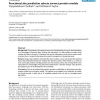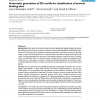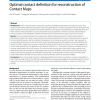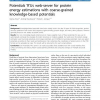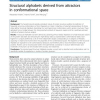109
Voted
BMCBI
2008
15 years 24 days ago
2008
Background: Protein domains present some of the most useful information that can be used to understand protein structure and functions. Recent research on protein domain boundary ...
117
Voted
BMCBI
2008
15 years 24 days ago
2008
Background: The prediction of protein structure can be facilitated by the use of constraints based on a knowledge of functional sites. Without this information it is still possibl...
102
Voted
BMCBI
2008
15 years 24 days ago
2008
Background: We present a novel method of protein fold decoy discrimination using machine learning, more specifically using neural networks. Here, decoy discrimination is represent...
102
click to vote
BMCBI
2008
15 years 24 days ago
2008
Background: Protein structure analysis and comparison are major challenges in structural bioinformatics. Despite the existence of many tools and algorithms, very few of them have ...
102
Voted
BMCBI
2010
15 years 24 days ago
2010
Background: Many protein structures determined in high-throughput structural genomics centers, despite their significant novelty and importance, are available only as PDB depositi...
126
Voted
BMCBI
2007
15 years 24 days ago
2007
Background: Since many of the new protein structures delivered by high-throughput processes do not have any known function, there is a need for structure-based prediction of prote...
BMCBI
2010
15 years 24 days ago
2010
Background: Proteins show a great variety of 3D conformations, which can be used to infer their evolutionary relationship and to classify them into more general groups; therefore ...
110
click to vote
BMCBI
2010
15 years 24 days ago
2010
Background: Contact maps have been extensively used as a simplified representation of protein structures. They capture most important features of a protein's fold, being pref...
92
Voted
BMCBI
2010
15 years 24 days ago
2010
Background: Knowledge-based potentials have been widely used in the last 20 years for fold recognition, protein structure prediction from amino acid sequence, ligand binding, prot...
111
Voted
BMCBI
2010
15 years 24 days ago
2010
Background: The hierarchical and partially redundant nature of protein structures justifies the definition of frequently occurring conformations of short fragments as `states'...

